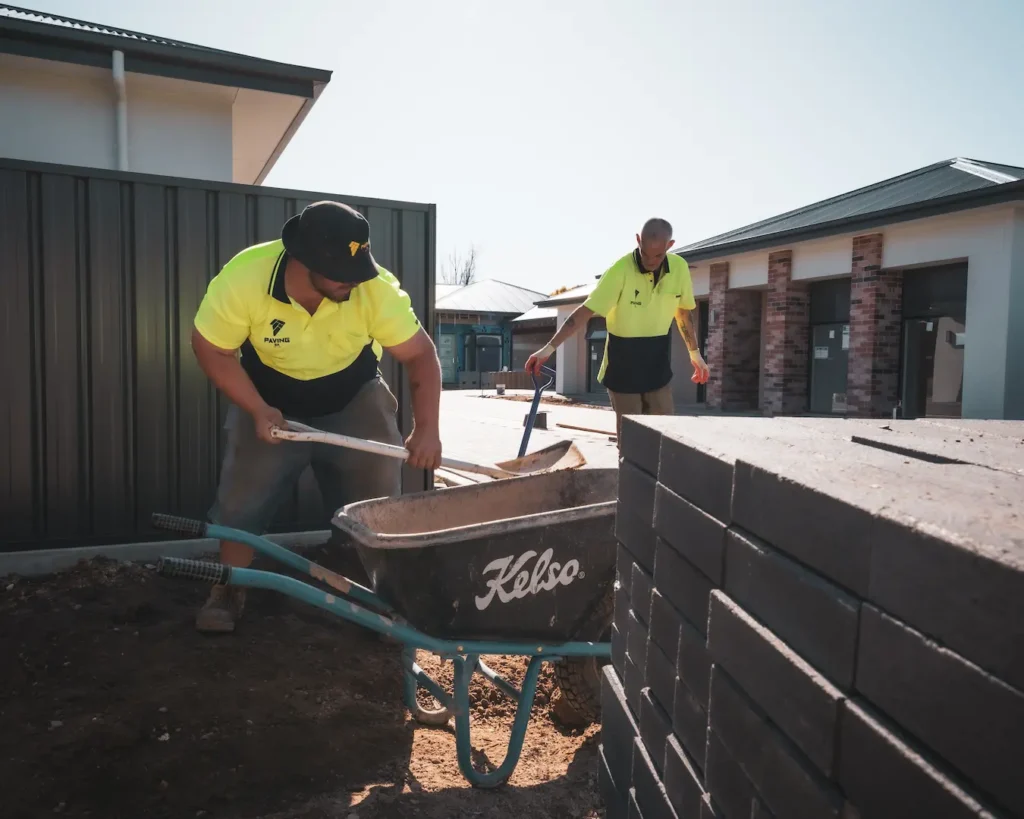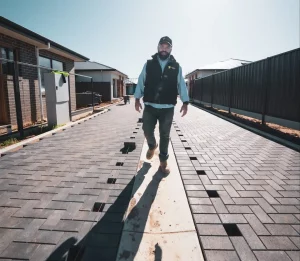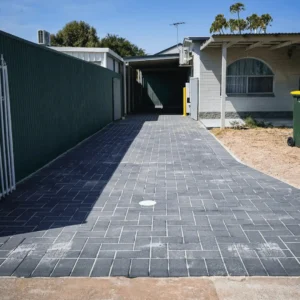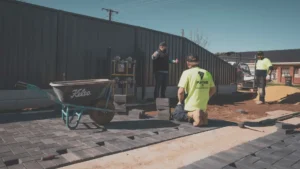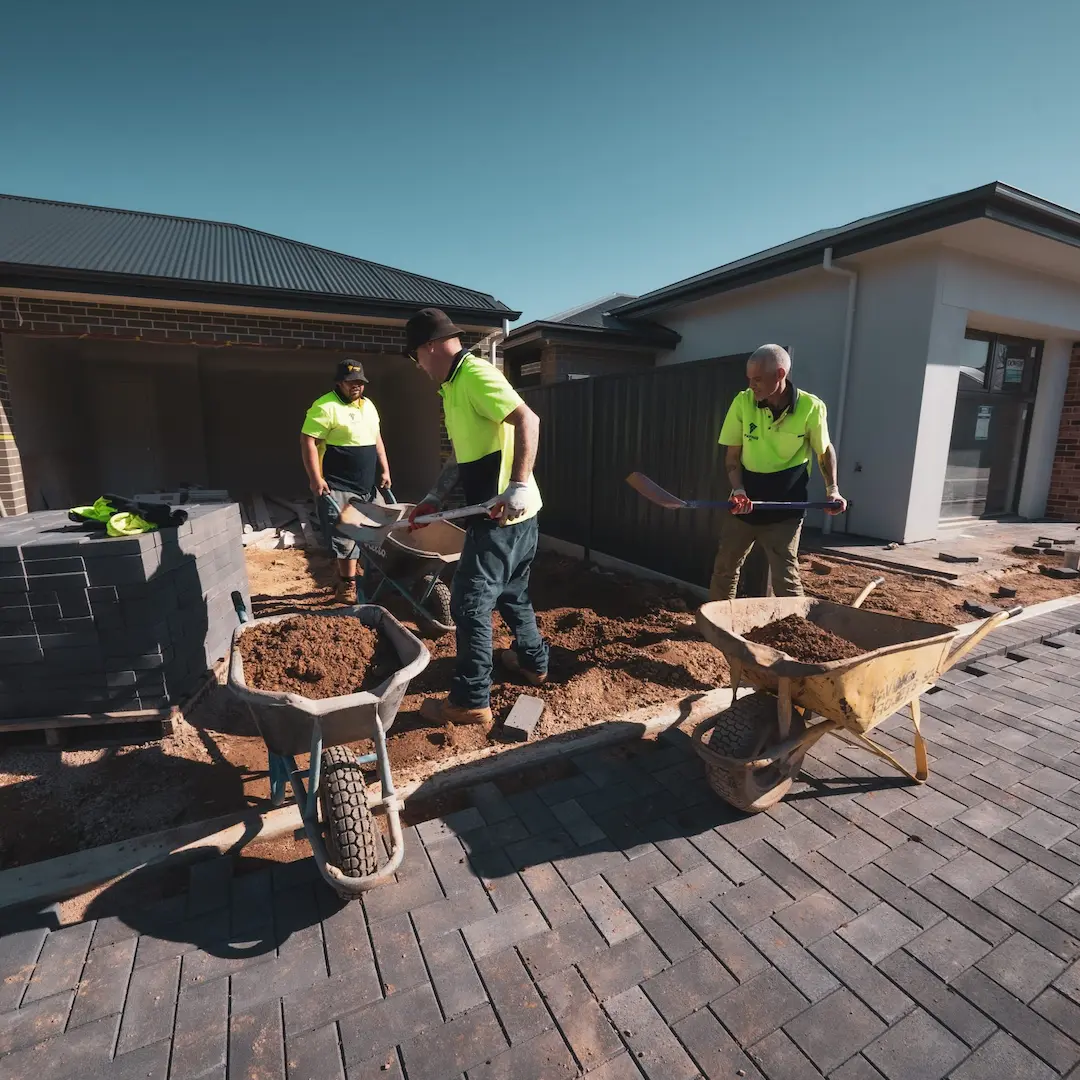Paving is crucial in constructing roads, driveways, parking lots, and other surfaces that require durability and stability. While the actual paving process is essential, proper job site preparation is vital in ensuring a successful, long-lasting result and a smooth paving process for the paving contractors!
Preparing a job site for paving involves several crucial steps that must be carefully executed to achieve optimal results. By dedicating time and effort to this crucial phase, you can minimise potential issues, save time and money, and ultimately create a smooth, durable surface that will stand the test of time.
This guide will walk you through the key considerations and steps in preparing a job site for paving.
Assess Site Conditions
Before beginning any paving project, it’s essential to assess the site conditions thoroughly. This involves evaluating soil stability, drainage, existing pavement condition, and potential obstacles or hazards. Assessing site conditions helps determine the appropriate course of action and ensures the site is suitable for paving. In South Australia, we are lucky with our weather. Depending on the season, you might find the site completely rained out.
Obtain Necessary Permits
Depending on your location and the project scope, you may need to obtain permits or approvals from local authorities. Check with your municipality or relevant governing bodies to ensure compliance with regulations or requirements before commencing work.
Clear The Area
Clearing the job site involves removing vegetation, debris, or obstacles hindering paving. This includes cutting down trees, removing rocks, and eliminating any other obstructions from the area to create a clean, blank canvas for the paving work.
Establish Proper Drainage
Adequate drainage is vital for the longevity and performance of the paved surface. Evaluate the site’s natural slope and design drainage systems to prevent water accumulation and potential damage. This may involve installing or repairing gutters, drains or grading the site to ensure proper water runoff.
Prepare The Subgrade
The subgrade serves as the foundation for the pavement and must be properly prepared. This step typically involves excavating the area to the required depth, removing unsuitable soils, and compacting the subgrade to achieve stability and uniformity. Compaction ensures that the subgrade can adequately support the weight and load-bearing requirements of the pavement.
Install Base Material
Adding a base material layer is crucial to provide additional support and stability to the pavement. This typically involves spreading and compacting a crushed stone, gravel, or aggregate layer to create a solid base for the asphalt or concrete surface. The thickness and type of base material will depend on the specific project requirements.
Fine-Grade The Surface
The surface must be fine-graded after the base material is in place to ensure a level and even sub-base. Fine-grading involves using specialised equipment to smooth and level the surface, removing any high or low spots and achieving the desired slope or grade for proper water drainage.
Compact The Sub-base
Proper compaction of the sub-base is essential to prevent settlement and ensure a stable foundation for the pavement. Utilise heavy machinery, such as compactors or rollers, to compact the sub-base thoroughly. This helps minimise the risk of future cracks or potholes and enhances the overall durability of the paved surface.
Edge Restraints And Joint Preparation
Installing edge restraints, such as curbs or borders, provides structural support and helps maintain the integrity of the paved area. Additionally, joint preparation involves creating appropriate expansion joints to allow for natural movement and prevent cracks caused by thermal expansion and contraction.
Conduct A Final Inspection:
Before proceeding with the actual paving process, perform a final inspection of the prepared job site. Ensure all necessary steps have been completed correctly and any potential issues have been addressed. This inspection helps identify any last-minute adjustments or modifications required to ensure a successful paving project in Adelaide.
By following these steps and paying careful attention to each phase of job site preparation, you’ll be well on your way to creating a solid foundation for your paving project. Remember to consult with professionals like Paving SA to adhere to local regulations and industry best practices to achieve the best possible results.
Paving SA
Paving SA stands out as a leading choice, with its excellent reputation, expertise in diverse paving applications, commitment to quality, attention to detail, and focus on customer satisfaction. By choosing Paving SA, you can be confident in receiving top-notch Adelaide paving services and enjoying a smooth, durable finished product.
Remember to conduct thorough research, request multiple quotes, and consult with professionals to make an informed decision that aligns with your paving needs. Start your journey towards a beautifully paved space by partnering with Paving SA, the trusted experts. As you can see by this article, there is many things that go into ensuring a job site is primed and ready for paving. Make sure your paving is worth it, by setting the job site up correctly for the best possible results!

